The secret furniture of Enric Miralles

Roula Khalaf, Editor of the FT, selects her favourite stories in this weekly newsletter.
When a visionary passes away before their time, one is left wondering what might have been achieved if they had been given the opportunity to continue their work. In the case of Enric Miralles, the Spanish postmodern architect who died at the age of 45 in 2000, his legacy lives on through the passion and commitment of his wife and business partner, Benedetta Tagliabue. Miralles was renowned for an unconventional aesthetic and contradicting norms with extraordinary silhouettes, but some of his most famous projects were only completed in the years following his death.
Twenty-two years later, Tagliabue is now championing his lesser-known work as a furniture designer at an exhibition entitled Perpetuum Mobile, held as part of Interni Design Re-Generation at the University of Milan. On show will be eight reproduced furniture designs that the couple conceived together specifically for the Barcelona warehouse they called home.

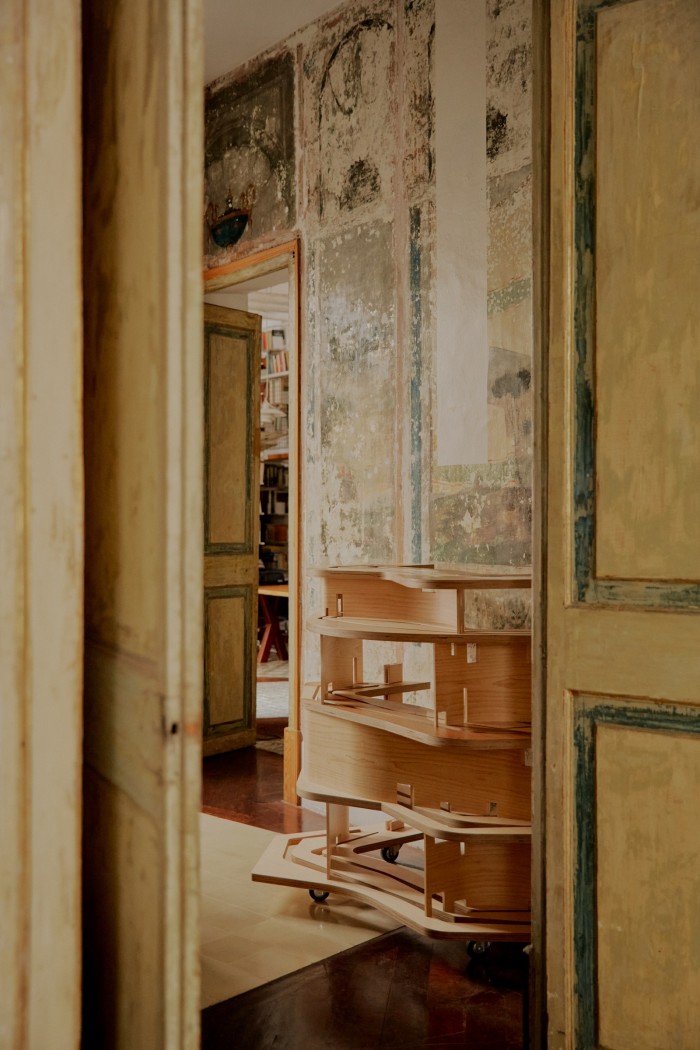
A ninth design, discovered as Tagliabue scoured through notebooks, sketch pads and intimate documents while organising the show, will also be on display. “It was like a little miracle,” she recalls of the moment she found his original draft. “I initially mistook it for an existing piece, and didn’t know until I had sent it to the studio and they called me with excitement and said, ‘You have sent us a new table!’” Aptly naming it the Mistery Table, Tagliabue says the original document was expertly detailed, measured and ready for production.
Elucidating Miralles’ love for drafting notes and sketches – something that she says occupied much of his time – Tagliabue suggests that the discovery of further hidden treasures is a possibility. “Many of his little notebooks contain secrets,” she says. “He was a person who loved secrets and private codes.”


In the same way, Miralles’ architectural work, which includes the Scottish Parliament Building in Edinburgh, the Santa Caterina Market in Barcelona and Utrecht Town Hall, offers glimpses of the architect’s unique character. “He saw reality in a different way and it was always surprising,” says Tagliabue of his freely formed structures and use of avant-garde materials. “When you talked to him about something, he would bring forward a different point of view. It could be a little annoying but most of the time it was eye-opening. There were many that felt angered by his anti-conformist assertiveness, but it was wonderful to witness and I’ve learnt from it myself.”
Working with Miralles, says Tagliabue, was like a game in which you had to play along. “He was constantly doing the unexpected, which was fun but also challenging,” she laughs. “It was only when he was gone that I understood how much I had learnt and that’s why I continue his experimental approach to this day. It takes guts to go against the norm and I want to go on remembering him and celebrating his work through exhibitions such as this.”


Perpetuum Mobile, which was organised in partnership with the American Hardwood Export Council (AHEC) and opens during Milan Design Week (6 to 13 June) was originally scheduled for 2020, marking 20 years since Miralles’ passing; it includes tables, seating and shelving designed by the duo between 1992 and 1999. While each of the nine pieces are distinctively unique, they embody Miralles’ concept of movement (as referenced in the exhibition title), imagining the house as a space in which furniture doesn’t have a dedicated purpose but can be modified or moved to respond to different needs. “One room with one piece of furniture would have multiple scenarios,” Tagliabue adds. “His pieces provide the possibility to change your space every day.”
The reproductions of the original designs, handcrafted by Madrid-based carpentry workshop La Navarra, take on a new dimension with updated materials thanks to the input of the AHEC, an organisation with which Tagliabue has collaborated many times. While the original furniture uses timbers such as elm, iroko and birch plywood, most likely surplus from Miralles’ building projects, the new versions have been interpreted in red oak, maple, cherry and tulipwood donated by Spanish timber specialists AE Maderas. Tagliabue selected these species not only for their aesthetics and performance but also their environmental credentials. “In all of our projects, it is about learning from nature: working with it and being informed by it,” she says.


With the exhibition resembling the interior of the house in which Tagliabue still resides, it will allow visitors to step into her world. I first see the pieces within the crumbling 18th-century Barcelona loft for which they were intended. The capacious home is spectacular: its distressed plaster walls filter light through the house via unadorned windows, while Miralles’ gigantic circular Lelukaappi shelving system sits in the centre of one room. Like much of his furniture, it was conceived to surround the user, opening out on wheels, and within one perfectly engineered piece creates a place to work, read or relax. The angled legs of his Ines table, meanwhile, appear to dance on a vintage red rug, instilling warmth and character into an otherwise spare space. His Mistery table, with its unusual zigzag profile (a very practical design that lengthens or shortens the table), also dominates the room in which it is situated, but here the mood is more dynamic as the backdrop is punctuated by distressed paintwork and swirling tiles set into the floor.
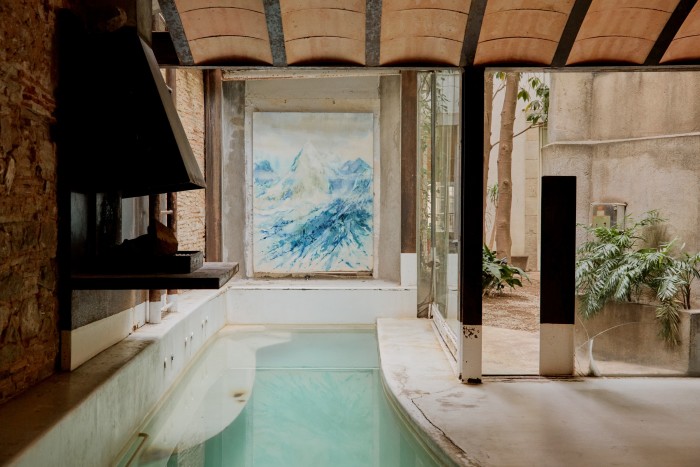

“While those who came to our home knew the pieces well, no one really discovered them deeply,” Tagliabue says. “We had to focus on bigger projects, and they were largely hidden, so this project is about keeping that part of Enric alive – they represent his freedom and tenacity.” Contemplating what Miralles might say if he were to see the exhibition for himself, Tagliabue laughs out loud. “I am sure he would be delighted. But he would start moving or changing things around.”
As head architect of their architectural practice EMBT, Tagliabue is herself an accomplished architect whose work includes the Zhang Daqian Museum in Neijiang, China, and San Giacomo Church in Ferrara, Italy, but she says there is an equilibrium to be found between continuity and innovation. “It’s important to be present in your time, ” she says.
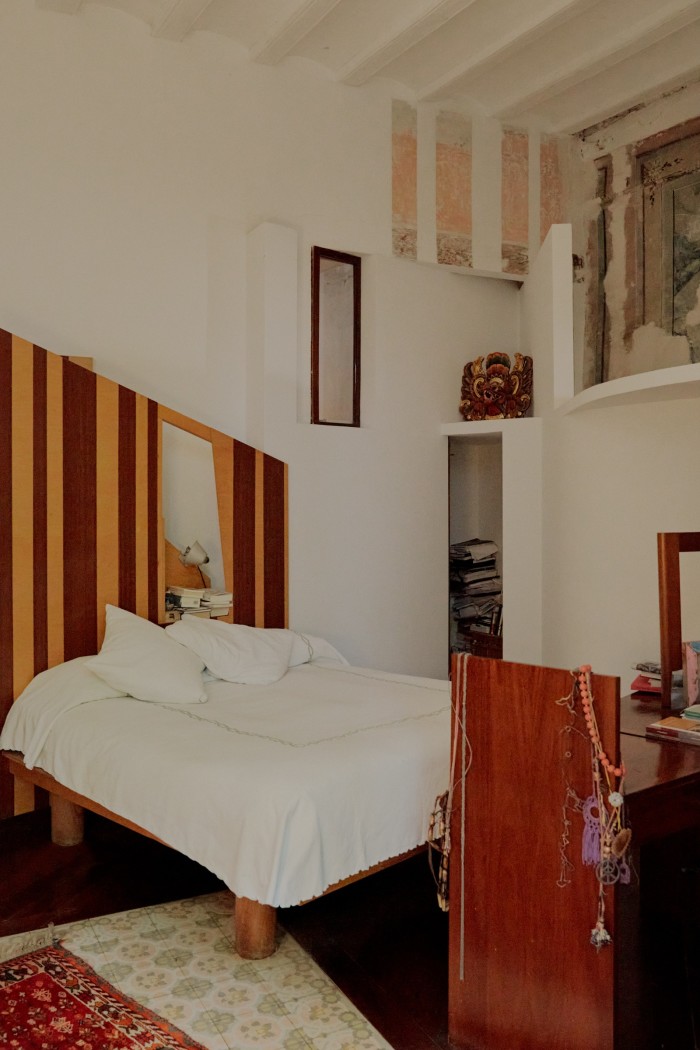

The challenge of navigating the studio in the period following Miralles’ death was difficult for Tagliabue. “We were in the middle of many projects, and I had this terrible feeling that everything would fall apart,” she recalls. “I was extremely sad that he wouldn’t be present in the best moment of his professional life.” She remembers specifically the intensity of the Scottish Parliament project, where so much money and power were at stake. Tagliabue says being alone and female made the experience particularly arduous. “I was aware that almost nobody respected me in my own right as an architect at that point. There were a few who remained loyal and honourable to me but mostly, especially on the larger projects, they tried to persuade me to hand over to a collaborator or to local partners. It was at that moment that I really knew what it was to be a widow. I had no power, no position and had to fight hard to stand my ground.” Her resolve and talent carried her through to success. “I had nothing to lose. I felt desperate and, through that, found great strength. I had to fight to the end.”

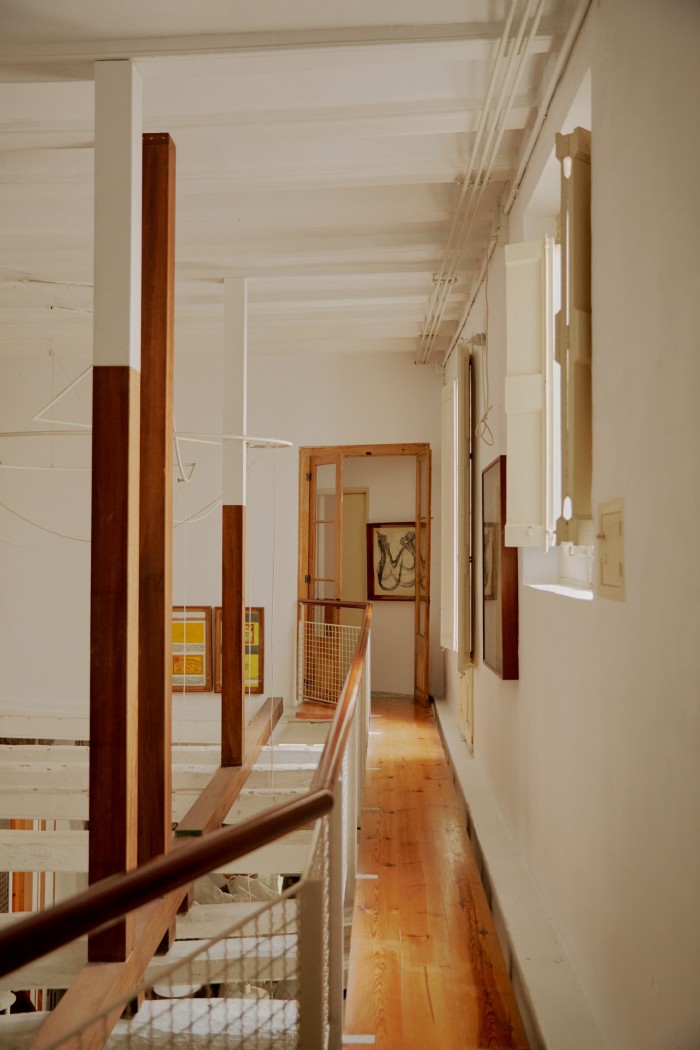
With those days now behind her, Tagliabue is intent on upholding the family legacy and has been delighted to welcome her daughter and her partner into the Fundació Enric Miralles. An educational hub continuing the radical architect’s approach through a variety of courses, lectures, workshops and exhibitions, it also brings to life the love for teaching that was so important for Miralles. The architect consciously sought the opinions of younger generations, particularly those of students, because they questioned things in ways no one else did. “Our office was filled with students at one point,” Tagliabue recalls. “On the one hand that would be a disaster but, most of the time, it was fantastic!”

Following Milan Design Week, AHEC will donate the nine furniture designs to the foundation, which is based in Barcelona’s Passatge de la Pau. Here, they will remain on display, enabling visitors from across the world to connect to this body of work. “There will also be the opportunity for people who fall in love with the pieces to have them reproduced [POA]. They will be completely unique, and this will be done with the artisans who worked on the reproductions for this showcase,” Tagliabue explains. She hopes that accessibility to Miralles’ work will continue his free-spirited ethos – one that reminds us all not to conform to the ideals of others but to remain true to our own. “That’s why I’m going on with this game!”
Perpetuum Mobile runs from 6 to 13 June as part of Interni Design Re-Generation at the University of Milan during Milan Design Week
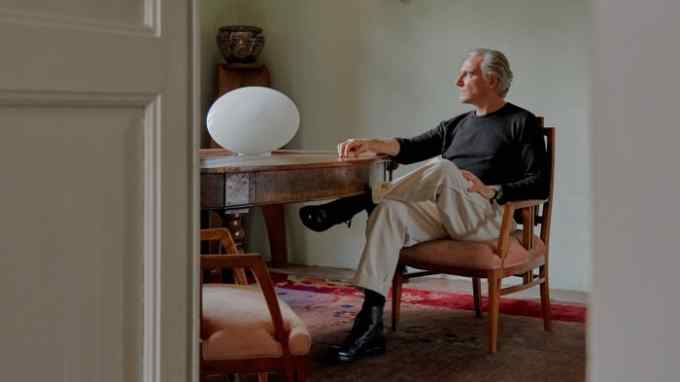
Comments